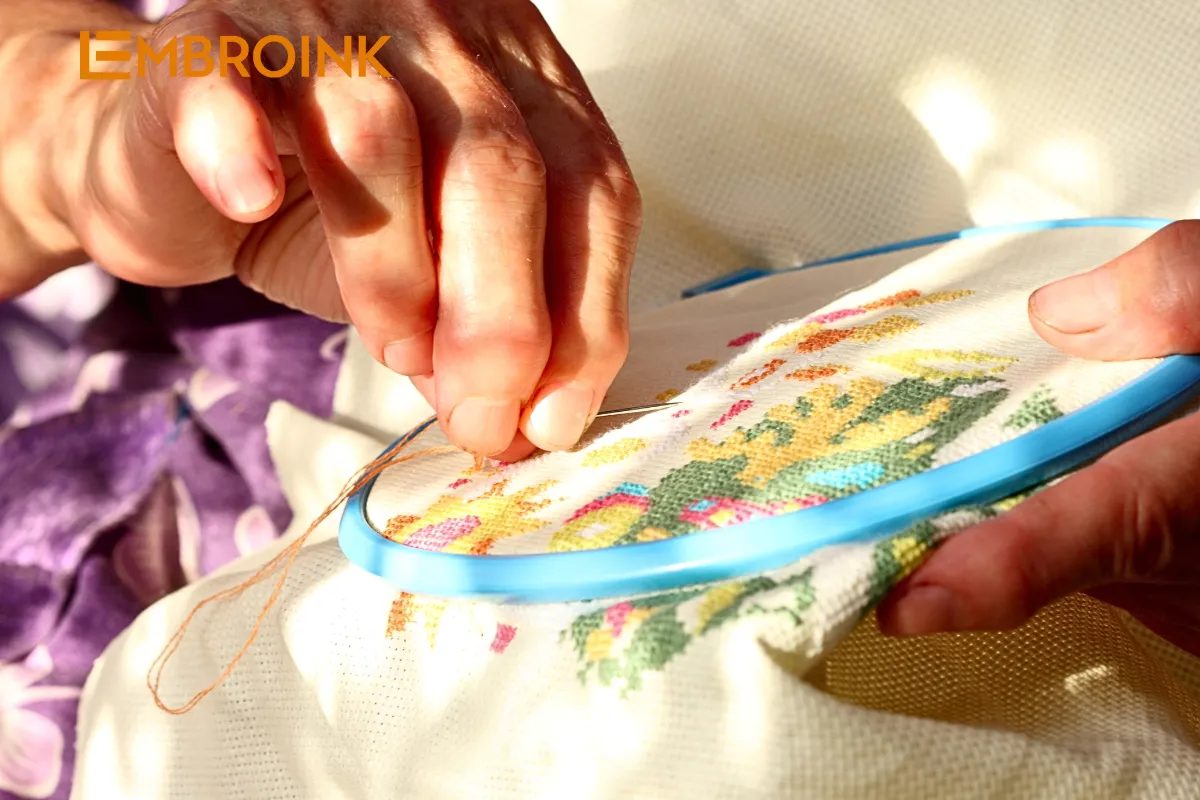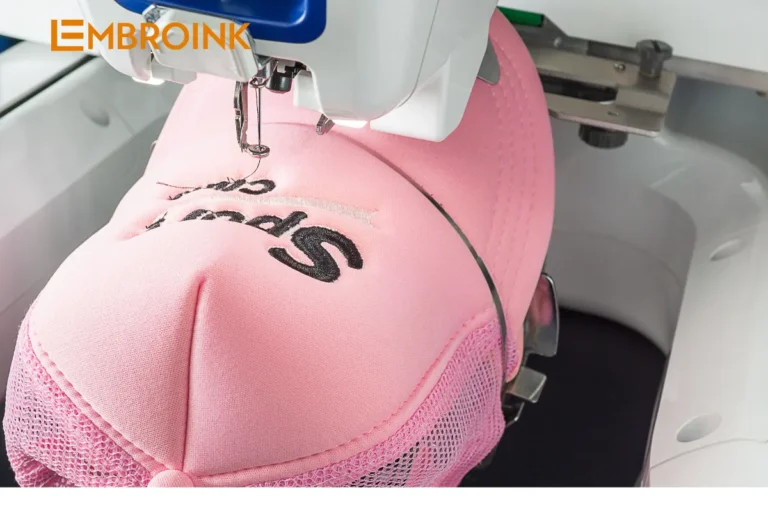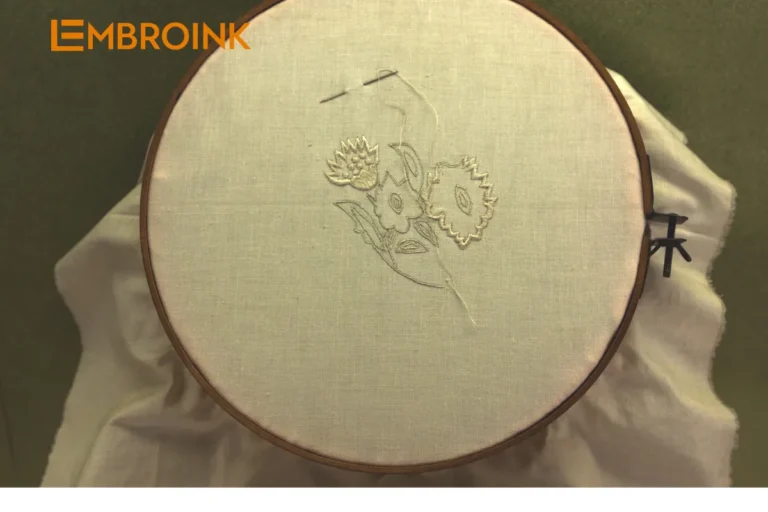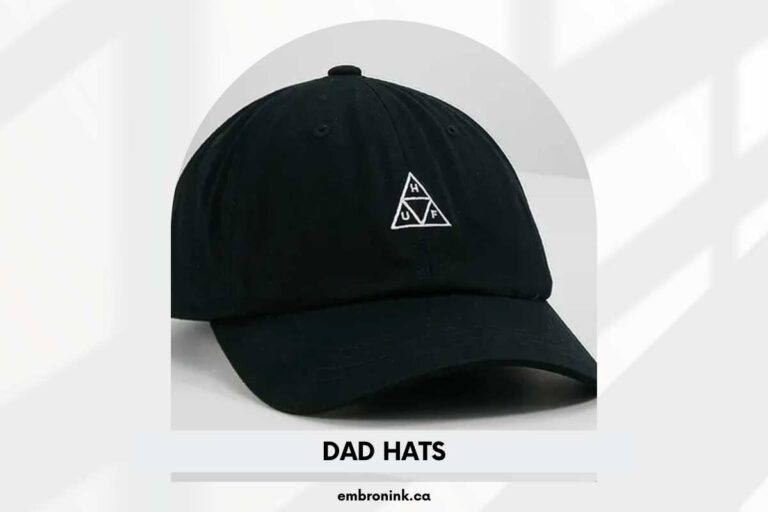How to get started embroidery in 2024?
In an age where digital content seems to dominate, the tactile charm of embroidery stands out as a refreshing contrast. This ancient art form, with roots that go back thousands of years, is experiencing a strong resurgence in the online marketplace. For entrepreneurs and artists, embroidery is more than just stitched fabric; it’s an opportunity to weave their creativity into tangible, wearable art pieces that customers crave. Whether you’re a seasoned artisan or a newcomer looking to turn your creative impulses into profitable ventures, 2024 is proving to be a pivotal time for online embroidered. Let’s explore with EmbroInk in the article below
What is embroidery?
Embroidery is the craft of decorating fabric or other materials using a needle to apply thread or yarn. Embellishments, such as pearls, beads, quills, and sequins, can also be incorporated. This art form is universal, evident in every culture worldwide, from China’s delicate silks to the vibrant patterns of Mexican textiles.

A brief history
The art of embroidery dates back to the Iron Age, with its earliest surviving examples found in China from the 5th-3rd century BC. Over time, embroidery evolved from a domestic craft into an art form symbolizing status, wealth, and beliefs.
During the Middle Ages, embroidered church vestments became prominent in Europe. By the Renaissance, embroidery had become an essential skill for women of high social standing. The 19th century’s Industrial Revolution significantly changed embroidery with the invention of the sewing machine, making production faster and more accessible.
The significance of embroidery
Embroidery is more than just an art or a craft; it holds cultural and historical significance. It tells stories, marks special occasions, and identifies particular groups or regions. The patterns, basic embroidery stitches (such as chain stitch, cross stitch, satin stitch, blanket stitch, stem stitch, split stitch, running stitch, etc.), and colors convey meanings and messages.
Embroidery is a vast and intricate art form, encompassing a myriad of styles and techniques. Types of embroidery include surface embroidery, counted thread embroidered, whitework embroidery, crewel embroidery, and more.
Embroidery in the contemporary world
In 2024, embroidery represents a blend of tradition and innovation. While basic hand embroidery stitches remain cherished skills, digital advancements like computerized embroidery machines and design software have transformed the landscape.
Fashion designers incorporate embroidery into haute couture and everyday wear. Contemporary artists utilize embroidery as a medium for self-expression, pushing the boundaries of what’s possible with needle and thread.

Essential tools and equipment for an embroidery business
Embroidery, like any craft, requires specialized tools and equipment to produce high-quality work, especially when selling online. As an entrepreneur or artist, investing in the right tools can significantly enhance the final product’s quality and your workflow’s efficiency.
- Embroidery hoops: These keep the fabric taut while stitching, ensuring precision and consistency. They come in various sizes to accommodate different project dimensions.
- Needles: Different fabrics and threads require specific needles. A good assortment, including ballpoint and sharp needles, is crucial for handling various materials and designs.
- Threads: Invest in quality embroidery threads in a wide range of colors. Polyester and rayon threads are popular choices due to their sheen and strength, providing durability and a professional finish.
- Stabilizers: These materials support your fabric, preventing puckering or distortion. They’re available in various types, including cut-away, tear-away, and wash-away, each suited for different fabrics and designs.
- Scissors: Precision scissors specifically designed for embroidery help trim threads close to the fabric without causing damage. A small, sharp pair is essential for clean and accurate cutting.
- Storage colutions: Organizing threads, needles, and other small accessories can make the embroidery process smoother and more efficient. Consider using containers, thread racks, and drawer organizers.
- Water-Soluble markers or pencils: These tools are invaluable for sketching out or transferring designs onto your chosen fabric. They easily wash out, leaving no trace on your finished product.
By investing in these essential tools and equipment, you can ensure that your embroidery projects are of the highest quality, making your business stand out in the competitive online market.
Designing for target audience
In the vast world of online merchandise, ensuring your embroidered creations resonate with your intended audience is essential. Creating designs that appeal directly to your target market can be the difference between a sold-out product and an inventory that collects dust. Here’s how you can align your embroidery designs with your target audience’s interests and needs.
Identifying niche markets in the embroidery space
The beauty of embroidery lies in its versatility. From intricate floral designs to pop culture references, the possibilities are endless. Finding a niche can help your brand stand out:
- Pop culture and fandom: Movies, TV shows, books, and even memes provide rich inspiration. Crafting designs around popular characters or quotes can attract a passionate fanbase.
- Nature and wildlife: With growing ecological awareness, designs highlighting nature, animals, or sustainability can resonate with eco-conscious consumers.
- Personalized and customized: Offering personalized monograms, names, or dates can make your products giftable and special.
- Local and cultural: Highlighting local landmarks, traditions, or cultural symbols can appeal to those who cherish their heritage or love to travel.
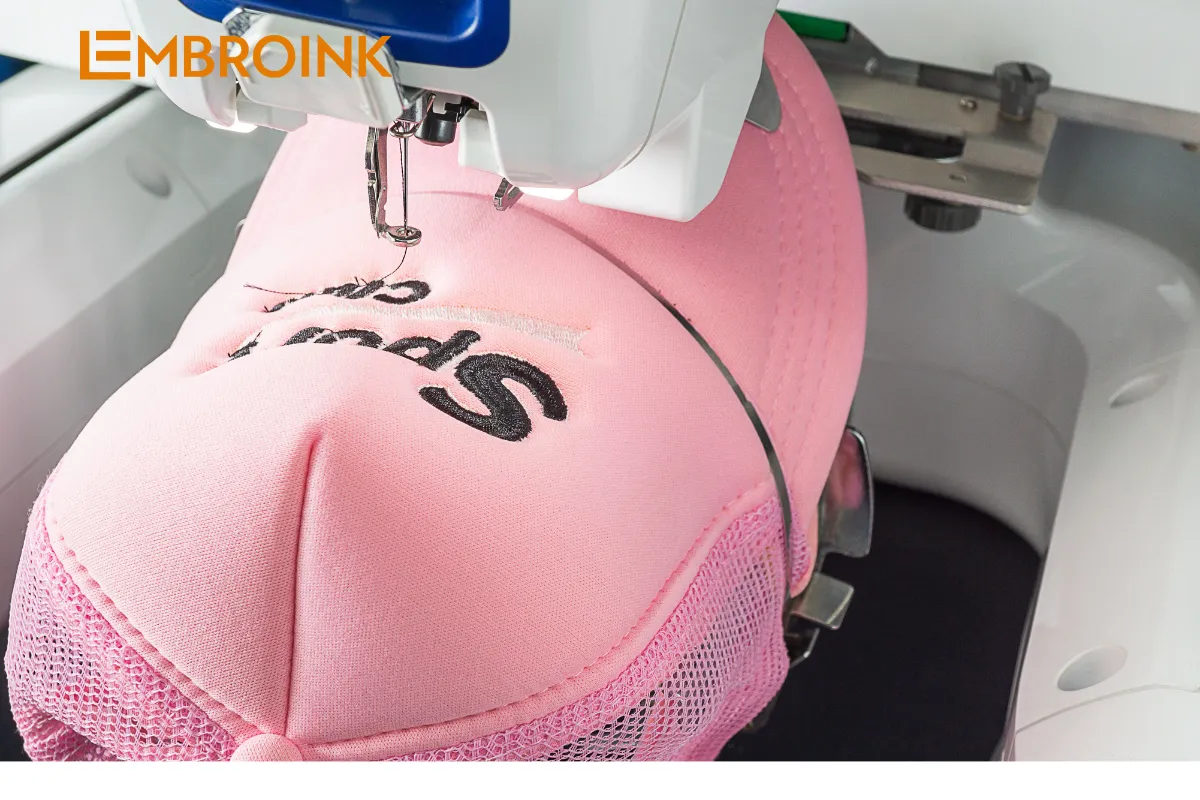
Tips for creating compelling and sellable designs
Designing for sales involves more than just creativity. To ensure your designs are not only beautiful but also marketable, follow these key principles. First, simplicity is key: especially for beginners, less intricate designs are quicker to produce and often resonate with their minimalist appeal.
Next, use vibrant and trendy colors: staying updated on color trends can make a classic design feel modern and fresh. Additionally, prioritize quality over quantity: instead of churning out multiple designs, focus on creating a few impeccable ones that can become your signature pieces. Finally, ensure versatility: designs should be adaptable to various products, from apparel to tote bags, expanding your potential product range and appeal.
Incorporating feedback and trends to refine offerings
Staying agile and responsive to feedback is key to long-term success:
- Engage with audience: Use platforms like Instagram or Etsy to seek feedback. Polls, Q&A sessions, or comments can be invaluable.
- Stay updated on trends: Whether it’s a trending color, pattern, or theme, being in the know can keep your designs relevant.
- Analyze sales data: Which designs sell the most? Which ones receive the best reviews? Use this data to refine your future offerings.
- Attend workshops and webinars: Continuously hone your skills and learn from other experts in the embroidery space. This will keep your work innovative and fresh.
By understanding your target audience and staying attuned to their preferences, you can create embroidery designs that not only capture attention but also drive sales.
Selling embroidered merchandise online
The online marketplace offers a global platform for artisans to showcase and sell their embroidered products. But with the vastness of the digital world comes the challenge of standing out and making sales. Here’s a guide to successfully selling your embroidered merchandise online in today’s competitive space.

Platforms to consider
Selecting the right platform is like choosing a storefront for your business. Each has its unique advantages:
- Etsy: Tailored for handmade and unique items, Etsy has a ready audience that appreciates artistry and craftsmanship. Its user-friendly interface is ideal for beginners.
- Shopify: A dedicated ecommerce platform, Shopify offers robust tools for inventory management, marketing, and sales analytics. It’s perfect for those aiming to scale up their embroidery business.
- WooCommerce: An open-source plugin for WordPress, WooCommerce provides flexibility for those who want to build and customize their online store. With its extensive features, it’s suitable for both small and large businesses.
- Others: Platforms like Squarespace or Wix offer varying degrees of customization and functionality, depending on your needs.
Presentation and photography: Showcasing Art
Your online presentation can make or break a sale. Here’s how to capture your art’s essence. Use natural lighting: photograph your products in soft, natural light to highlight the embroidery’s details and colors. Maintain consistent aesthetics: whether you opt for a minimalist white background or a thematic setup, ensure consistency across product photos for a cohesive shop look.
Provide multiple angles: showcase your embroidery from various angles to give potential buyers a comprehensive view. Include close-ups: highlight the intricacy of your work with close-up shots, focusing on the stitches and patterns. Use lifestyle shots: display the product in real-life settings, such as an embroidered tote bag being used, to help customers visualize its use.
Pricing strategies for a competitive market
Pricing is a delicate balance of covering costs, ensuring profitability, and offering value:
- Cost analysis: Break down all costs involved – materials, tools, overheads, platform fees, shipping, and your time.
- Market research: Scout competitors’ prices. Are you offering something unique that might warrant a premium price, or is a competitive price more strategic?
- Perceived value: Handcrafted items often have a higher perceived value due to their uniqueness and the artisan’s skill. Don’t undersell your work.
- Dynamic pricing: Occasionally offer discounts or bundle deals to attract more customers while ensuring it doesn’t compromise your profit margins.
- Review and adjust: As your skills grow and the market evolves, revisit your pricing strategy to stay relevant and profitable.
By carefully selecting your platform, presenting your products professionally, and pricing them strategically, you can successfully navigate the online marketplace and grow your embroidery business.

